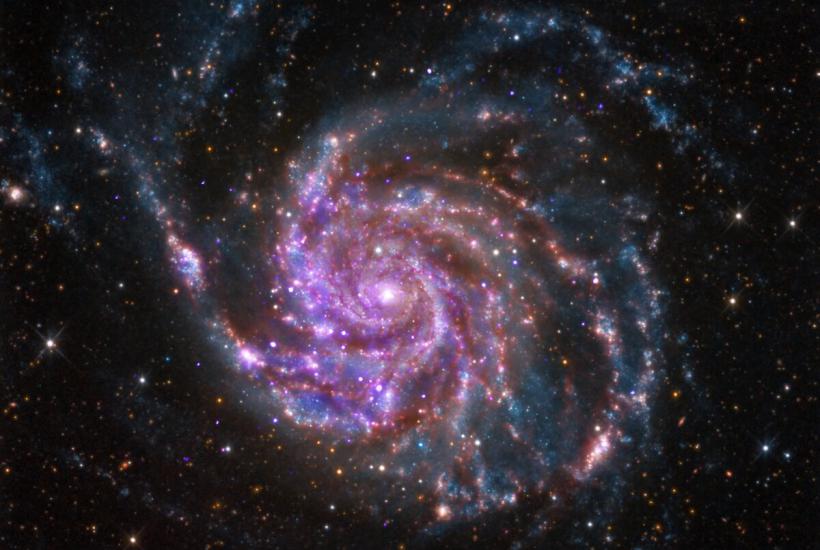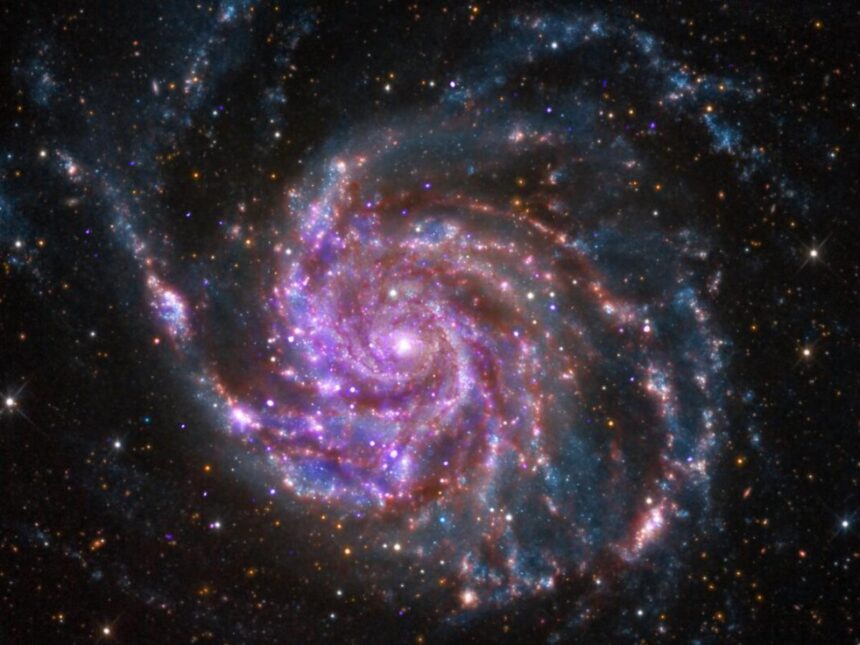Exoplanet K2-18B shows the strongest evidence of life beyond the solar system
A team of astronomers from the University of Cambridge announced the discovery of one of the most promising signs of potential extraterrestrial life. The researchers found molecules in the exoplanet K2-18B atmosphere that, as on Earth, are produced by living organisms.

Photo: Commons.wikimedia.org by Detlef Hartmann, https://createivecommons.org/publicdomain/zero/1.0/
Open space
The discovery has caused a sensation and has already called “the strongest evidence so far” or life beyond the solar system.
Exoplanet K2-18B, located in Leo’s constellation, orbits its star at a distance of 124 light years from the earth.
With the help of the James Webb space telescope (JWST), astronomers could detect chemical traces of substances: methane and carbon dioxide, associated with the presence of life.
According to the scientist, the concentration of these molecules in the planet’s atmosphere is thousands of times higher than on earth.
If life is confirmed in K2-18B, it would suggest that life extends through the galaxy.
The planet can have a hydrogen -rich atmosphere and a dependent ocean
Holmberg MansCo -author of the study and researcher at the Institute of Space Telescope Sciences, he said to THi Washington Post That the observations suggest that the planet has an atmosphere rich in hydrogen and a deeper ocean than any of the oceans we have on our planet Earth.
Scientists urge precaution to claim extraterrestrial life
The scientific community recognizes the potential importance of discovery. However, it is premature to make bold statements.
Researchers plan to make more K2-18B observations using the same telescope to confirm or refute the presence of Dimetil sulfide (DMS) and Dimetil disulfide (DMDS) in its atmosphere. These are highly reactive gases, which means that if they are present, something must constantly produce as part of the enhanceable biological processes.
While current measurements already show quite high concentrations of these compounds, scientists emphasize that more data is needed.
K2-18B temperature near Earth
Discovered in 2015, K2-18B is approximately 2.6 times larger and 8.6 times more massive than Earth. Its temperature is very similar to the lands, but the orbit planet so fast that a year in K2-18b hard only 33 days. Many experts believe that it is covered by the ocean and belongs to the so -called Hycean world planets with a hydrogen -rich atmosphere and a fixed water coverage.
Water was first detected in K2-18B in 2019. Astronomer Angelos A tias and his colleagues identified water vapor in their atmosphere, and conditions that allow the presence of liquid water. The main researcher Björn Benneke pointed out the possibility of heavy rains on the planet, calling him one of the most exciting conclusions.
In 2020, scientists suggested that K2-18B can contain a water ocean and could be habitable. The orbit planet in the habitable zone around a red dwarf star, that is, at a distance where life could potentially exist.
Detailed
Antique Exoplanet ORPÍN Extrasolar planet It is a planet outside the solar system. The first possible evidence of an Exoplanet was observed in 1917, but it was not recognized as such until 2016. The first confirmed detection of an exoplanet was around a pulse in 1992, and the first detection planet, FIRESTCE detected, Firert detected, atiftes, was a main appearance. Confirmed in 2003. As of March 26, 2025, there are 5,867 exoplanets confirmed in 4,377 planetary systems, with 985 systems that have more than one planet. In collaboration with land -based observatories and other spatials, the James Webb (JWST) space telescope is expected to provide more information on Exoplanet features, such as their compositions, environmental and potential conditions for life.
>












